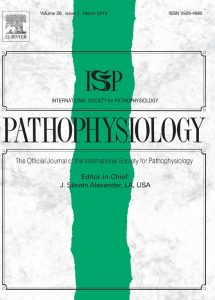Publications

Obstructive sleep apnea and ageing Myotonometry demonstrates changes in the soft palate and tongue while awake
Authors: Marlit Veldi, Veiko Vasar, Arved Vain, Mart Kull
Affiliations: Department of Psychiatry, University of Tartu; Institute of Experimental Physics and Technology, University of Tartu; Department of Otorhinolaryngology, University of Tartu, Estonia
Journal: Pathophysiology - December 2004, Volume 11, Issue 3, Page 159–165 (DOI: 10.1016/j.pathophys.2004.08.002)
-
Field & Applications:
- Medical
Background: Upper airway dilator muscles are important in the pathogenesis of obstructive sleep apnea syndrome (OSAS). The present study compares changes of tissue properties between the soft palate and tongue in different age groups of apnea patients and healthy subjects.
Materials and methods: OSAS patients diagnosed by polysomnography (15 patients – age 30–70 years; 10 patients – age 18–29 years) and healthy volunteers (10 subjects – age 30–70 years; 10 patients – age 18–29 years) participated in the study.
Computerized endopharyngeal myotonometry was used to measure the biomechanical properties – stiffness and elasticity of the soft palate.
M. Veldi, V. Vasar, A. Vain, T. Hion, M. Kull – Computerized endopharyngeal myotonometry (CEM): a new method to evaluate the tissue tone of the soft palate in patients with obstructive sleep apnea syndrome, J. Sleep Res. 9 (2000) 279–284;
M. Veldi, V. Vasar, T. Hion, M. Kull, A. Vain – Ageing, soft-palate tone and sleep-related breathing disorders, Clin. Physiol. 21 (2001) 358–364] and lingual tissues;
M. Veldi, V. Vasar, T. Hion, A. Vain, M. Kull – Myotonometry demonstrates changes of lingual musculature in obstructive sleep apnea, Eur. Arch. Otorhinolaryngol. 259 (2002) 108–112;
M. Veldi, V. Vasar, T. Hion, A. Vain, M. Kull – Myotonometry demonstrates changes of soft palate and genioglossal muscle in obstructive sleep apnea, Sleep Med. 4 (Suppl. 1) (2003) S49] during wakefulness.
Results: We did not find any statistical differences in tissue properties between the soft palate and the tongue tissues, either stiffness or elasticity, in young non-snorers and young patients of apnea (p > 0.05). The stiffness of the soft palate of middle-aged apnea patients was increased compared with the tongue (p < 0.001). The elasticity of tongue of middle-aged patients of apnea was decreased compared with the soft palate (p < 0.001).
Conclusions: The biomechanical properties of the soft palate and the tongue undergo different changes in the case of snoring and upper airway obstruction and ageing.
Keywords: Apnea, OSAS, Snoring, Ageing, Tissue stiffness and elasticity, Soft palate and tongue.
The decreased elasticity of tongue muscle, as well as increased stiffness of the soft palate in middle-aged apnea patients seem to be associated with different biomechanical behaviours in the case of snoring and upper airway obstruction and ageing.


